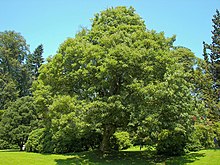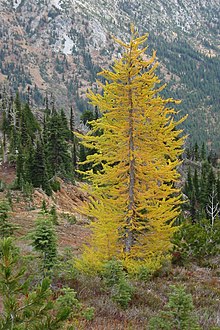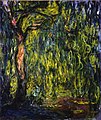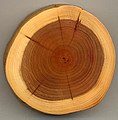The Trees Portal
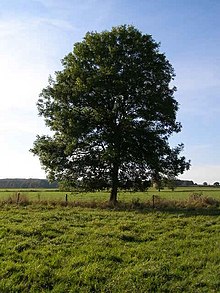
In botany, a tree is a perennial plant with an elongated stem, or trunk, usually supporting branches and leaves. In some usages, the definition of a tree may be narrower, including only woody plants with secondary growth, plants that are usable as lumber or plants above a specified height. In wider definitions, the taller palms, tree ferns, bananas, and bamboos are also trees.
Trees are not a monophyletic taxonomic group but consist of a wide variety of plant species that have independently evolved a trunk and branches as a way to tower above other plants to compete for sunlight. The majority of tree species are angiosperms or hardwoods; of the rest, many are gymnosperms or softwoods. Trees tend to be long-lived, some reaching several thousand years old. Trees have been in existence for 370 million years. It is estimated that there are around three trillion mature trees in the world.
A tree typically has many secondary branches supported clear of the ground by the trunk, which typically contains woody tissue for strength, and vascular tissue to carry materials from one part of the tree to another. For most trees it is surrounded by a layer of bark which serves as a protective barrier. Below the ground, the roots branch and spread out widely; they serve to anchor the tree and extract moisture and nutrients from the soil. Above ground, the branches divide into smaller branches and shoots. The shoots typically bear leaves, which capture light energy and convert it into sugars by photosynthesis, providing the food for the tree's growth and development.
Trees usually reproduce using seeds. Flowers and fruit may be present, but some trees, such as conifers, instead have pollen cones and seed cones. Palms, bananas, and bamboos also produce seeds, but tree ferns produce spores instead.
Trees play a significant role in reducing erosion and moderating the climate. They remove carbon dioxide from the atmosphere and store large quantities of carbon in their tissues. Trees and forests provide a habitat for many species of animals and plants. Tropical rainforests are among the most biodiverse habitats in the world. Trees provide shade and shelter, timber for construction, fuel for cooking and heating, and fruit for food as well as having many other uses. In much of the world, forests are shrinking as trees are cleared to increase the amount of land available for agriculture. Because of their longevity and usefulness, trees have always been revered, with sacred groves in various cultures, and they play a role in many of the world's mythologies. (Full article...)
Acer pseudoplatanus, known as the sycamore in the British Isles and as the sycamore maple in the United States, is a species of maple native to Central Europe and Western Asia. It is a large deciduous, broad-leaved tree, tolerant of wind and coastal exposure.
Although native to an area ranging from France eastward to Ukraine, northern Turkey and the Caucasus, and southward to the mountains of Italy and northern Iberia, the sycamore establishes itself easily from seed and was introduced to the British Isles by 1500. It is now naturalised there and in other parts of Europe, North America, Australia and New Zealand, where it may become an invasive species. (Full article...)Did you know? -
- ... that the Paget Marsh Nature Reserve in Bermuda has been called the "best surviving example of native cedar, palmetto (pictured), and mangrove forests", yet at one point the island lost 99% of its cedar trees?
- ... that a canopy walkway connects seven tree tops in Ghana's Kakum National Park?
- ... that the ivory curl tree can grow 30 m (100 ft) tall in its natural rainforest habitat?
- ... that the trumpet tree, a fast-growing tree native to the American tropics, is considered one of the hundred worst invasive alien species in the world?
- ... that the installation of an artificial Christmas tree in Brussels prompted an online petition against it with 25,000 signatures?
- ... that a white oak tree with a trunk circumference of over 26 feet (7.9 m) grew near Wolf Run until it was cut down in 1852?
- ... that the blue nuthatch (pictured) protects its corneas from falling debris when prospecting on trees by contracting the bare skin around its eyes – an adaptation apparently unique to the species?
Selected article -
General images
Selected lists
Subcategories
Related portals
Associated Wikimedia
The following Wikimedia Foundation sister projects provide more on this subject:
-
Commons
Free media repository -
Wikibooks
Free textbooks and manuals -
Wikidata
Free knowledge base -
Wikinews
Free-content news -
Wikiquote
Collection of quotations -
Wikisource
Free-content library -
Wikispecies
Directory of species -
Wikiversity
Free learning tools -
Wiktionary
Dictionary and thesaurus

© MMXXIII Rich X Search. We shall prevail. All rights reserved. Rich X Search

